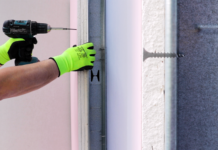Threads are ridges wrapped around cylinders like screws, bolts, and fasteners that allow mating with corresponding notches in nuts or holes. The varying space between the threads and their unique shapes characterize different thread types. Two of the most common are “fine” and “standard” – so what sets them apart? This guide covers all the key fine thread vs standard thread differences that manufacturing professionals and consumers should know.
What fine and standard threads indicate
The terms fine and standard simply describe the spacing between threads (known as pitch) on a fastener, screw, or bolt. Specifically:
Fine threads – Have more closely spaced ridges per inch than standard versions. So, there are extra threads per inch compared to the standard type.
Standard threads – Have wider spacing between each thread peak across an inch of fastener length compared to fine threads. So, there are relatively fewer thread ridges over an inch.
Numbering conventions
These spacing differences mean that fine and standard threads use separate numbering formats.
Fine thread designation: Full numbers indicate fine threads. So a ¼” – 20 UNC bolt uses a 20 fine thread—the 20 references 20 ridges per inch.
Standard thread designation: A fraction before figures indicate standard threads. So ¼” – 13 UNC uses a 13 standard thread, with wider 13 thread ridges spread per inch.
Measuring pitch differences
The actual gap between thread peaks on bolts or screws defines the “pitch” – the smaller this is, the more closely packed the threading. Fine pitches range between 0.1 mm to 2 mm, while standard pitches span 0.5 mm to 8 mm. Metric pitches simply equal the thread pitch in mm. Imperial pitches convert into “threads per inch.” As the name indicates, fine threads thus have finer pitch than standard versions.
Common shapes and types
The most familiar fastener thread profiles used globally include:
- UNC (Unified Coarse) – Standard type
- UNF (Unified Fine) – Fine type
- UNEF (Unified Extra Fine) – Extra fine pitch threads
- NPT (Taper Pipe Thread) – Pipe tap and fitting threads
Pipe threads cut on NPT or Pipe threading taps need extra precision over typical UNC nuts and bolt threads. That’s because, unlike simpler flat plane UNC threads, angled NPT joints seal tapered pipe connections only when threads mesh airtight. Standard UNC bolts instead use gaskets or dyes as seals.
Impact on fit and friction
Closer fine threading adds extra contact drive faces per inch, translating into increased friction resistance, which is useful in key applications. This allows:
- Improved fastening security in vibrating machinery – preventing loose fits
- Enhanced adjustment precision when alignments need micro variation control
- Low stripping risk by spreading stresses over more threads
Of course, standard threads offer positives, too, like quicker assembly in high production volumes or reduced torquing forces for field technicians. Ultimately, applications should determine ideal thread pitch specs based on handling sheer pressures, precision adjustment needs, and equipment operating conditions. Fine suits tightly tolerance equipment, while standard threads work for most casual uses.
Machining and tooling implications
Attaining uniform threads spanning different imperial and metric designations requires matching the exact cutting tool pitch to the intended fastener threading. Think of thread turns per inch or diameter adjustments on the machinery. Naturally, the denser ridges of fine taps and dies dictate slower feed rates and extra machining revolutions than standard versions to achieve clean crest finishes.
Using a 1⁄4 NPT pipe tap exemplifies this. Slow, steady advancement allows progressively sheering thick pipe walls while grooming just 1-2 threads per revolution. Tools like 60° threading inserts work across diverse pitches and diameters by programming specific “teeth” quantities, rotational speeds, and feed rates.
Automated CNC machines make this versatile pitch-independent switching simpler compared to manual changeovers. Custom cutters for odd thread forms, however, cost exponentially more. Production scales also impact fine/standard thread choice viability.
Assembly and design
Harnessing benefits from the two thread varieties in a single build is feasible. Standard bolts sufficiently secure joints for structural sections, while integrated collars, sleeves, or gears could utilize fine micro-adjustment threads.
Appendages like sensors are regularly planted into threaded ports, so choosing fine resolution and protection here prevents vibrational loosening. Even transition couplings with distinct thread types on either end enable joining coarse standard mechanisms to fine devices.
Generally, standard threads work well for economic strength, while fine types offer precision.
Summary
While fine and standard threads share triangular ridge fundamentals, finer spacing sets precise applications apart from general functions. Understanding conventions around measurement, numbering formats, shapes, tools, and best-use cases empowers engineers to deploy both varieties optimally. Matching thread pitch purposefully during design, machining, and maintenance remains key. With this knowledge, threading will be a bond-building rather than a bond-breaking experience across all assembly needs.



































































